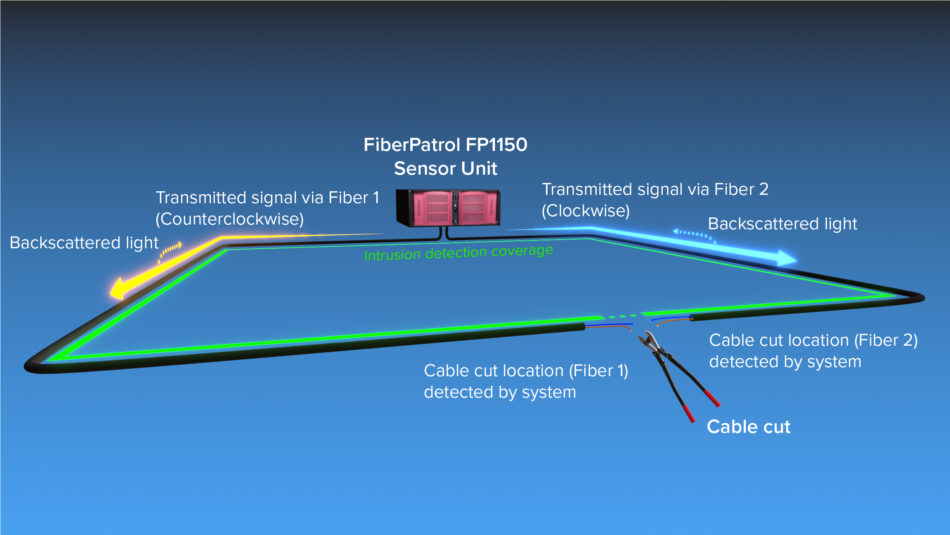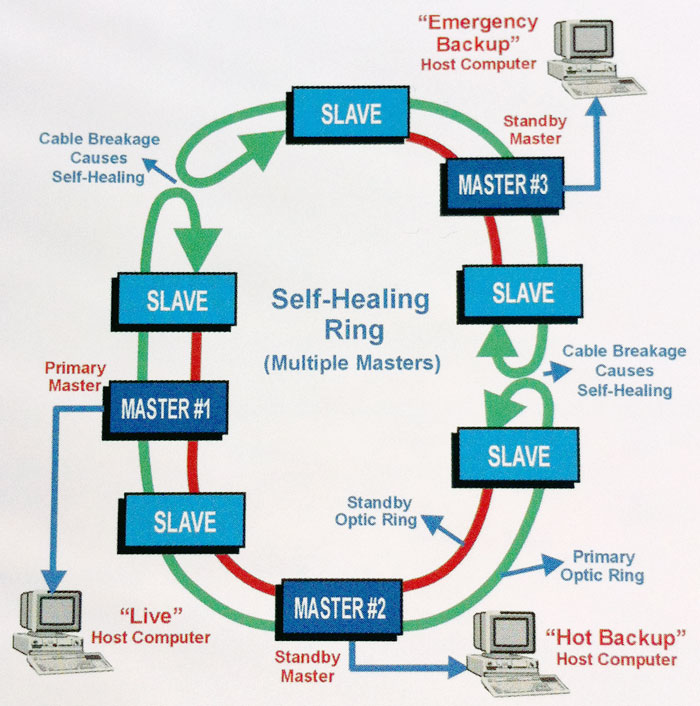How Fiber Security Helps Prevent Unauthorized Access and Boosts Surveillance
How Fiber Security Helps Prevent Unauthorized Access and Boosts Surveillance
Blog Article
Why Fiber Optic Security Solutions Are the Future of Defense
The shift to fiber optic protection systems marks a substantial improvement in the realm of protection, driven by their phenomenal data transmission capacities and strength to external interferences. These systems not just assist in faster and more trustworthy interaction but also provide a cost-effective service with reduced upkeep requirements. As the landscape of protection develops alongside arising innovations such as AI and IoT, the possibility for optical fiber to enhance and redefine safety and security infrastructures becomes increasingly obvious. Nonetheless, the effects of these advancements elevate essential concerns about the future of safety and security steps and their performance in an ever-changing setting.
Benefits of Fiber Optic Equipments
One of the main benefits of fiber optic systems is their exceptional data transfer capacity, which assists in the transmission of large quantities of data over cross countries without considerable loss. This characteristic is especially helpful for safety applications that require the continual tracking and transfer of high-def video clip feeds, sensor information, and other vital info. Optical fiber can fit the expanding demands of modern safety and security systems, making sure that information stays undamaged and trusted.
Furthermore, fiber optic wires are less susceptible to electro-magnetic interference, which can be a substantial concern in environments with various digital tools. This resistance boosts the honesty of the data being transmitted, thereby decreasing the risk of information violations or system failings. Fiber optic systems are naturally much more secure than traditional copper cable televisions, as touching right into a fiber optic line without detection is exceptionally difficult.
The longevity of fiber optic wires also adds to their allure. They are resistant to environmental factors such as wetness and temperature changes, reducing maintenance prices and increasing system long life. On the whole, these benefits placement fiber optic systems as a robust and efficient option for modern-day security infrastructures, making sure trusted and safe and secure data transmission.
Enhanced Data Transmission Rate

The capacity to transmit large amounts of information swiftly promotes the smooth integration of high-definition video feeds and progressed analytics. Safety systems can now process and examine info in real-time, improving response times and situational understanding. Additionally, fiber optic connections sustain longer transmission distances without deterioration of signal high quality, making them excellent for large protection networks.
The increased speed of fiber optic systems not only boosts the effectiveness of security operations yet additionally minimizes latency. This is especially essential in vital circumstances where prompt decision-making can avoid protection violations or mitigate possible threats. As companies remain to focus on safety and security and performance, the demand for rapid and trusted data transmission will certainly solidify fiber optic systems as a keystone of modern safety and security facilities.
Resistance to Disturbance
Fiber optic protection systems continually demonstrate extraordinary resistance to electromagnetic interference, a critical benefit in environments vulnerable to digital sound. Unlike traditional copper cable televisions, which can be negatively influenced by electro-magnetic fields, superhigh frequency interference, and other kinds of electrical disruption, fiber advice optic wires use light to send information. This fundamental home guarantees that the signals remain clear and unaltered, regardless of bordering electronic activity.
Making use of glass or plastic fibers in fiber optic modern technology creates an obstacle against interference, allowing for trusted data transmission also in difficult scenarios such as commercial centers, city locations with high digital traffic, or places near radio towers. This characteristic considerably reduces the likelihood of signal destruction or loss, making fiber optic systems particularly suitable for protection applications where stability and accuracy of information are vital.
Furthermore, this resistance to disturbance improves the general performance and reliability of security systems, making certain that surveillance and alert systems operate flawlessly. In a globe where protection is increasingly intimidated by innovative modern technologies, the durability of fiber optic systems stands out as a critical attribute, reinforcing their status as an essential element of contemporary safety and security framework.
Cost-Effectiveness Over Time
Significant cost financial savings can be attained with time with the implementation of fiber optic protection systems. While the first investment may appear higher contrasted to conventional copper-based systems, the long-lasting monetary advantages end up being noticeable via decreased operational and upkeep costs (fiber security). Fiber optic cords are naturally more resilient and read here much less susceptible to ecological aspects, which translates to reduce replacement and repair expenditures over their life expectancy
In addition, fiber optic systems require much less power to run, which further lowers power prices. Boosted data transmission abilities enable less repeaters and amplifiers, minimizing tools financial investment and simplifying setup processes. The scalability of these systems also adds to cost-effectiveness, as companies can increase their security framework without sustaining considerable additional costs.
One more factor to think about is the enhanced effectiveness in tracking and reaction capacities that fiber optics offer. Improved real-time data transmission can cause quicker incident action times, potentially mitigating losses and obligations connected with protection breaches. In amount, the long-lasting benefits of fiber optic safety systems not only warrant the initial expense but also place Go Here them as a financially prudent choice for organizations seeking robust defense remedies.

Future Technologies in Protection
Advancing innovations are set to reinvent security systems, integrating artificial intelligence (AI) and artificial intelligence to boost danger detection and action capacities. These innovations will enable safety systems to assess vast amounts of information in real-time, identifying patterns and anomalies that show potential dangers. This positive strategy will make it possible for much faster decision-making and a lot more effective event responses.
Additionally, the unification of the Net of Points (IoT) is paving the means for interconnected security tools, using extensive surveillance and tracking. Smart sensing units can pass on details about ecological changes, while automated alerts can alert safety and security employees immediately of dubious tasks.
Moreover, the evolution of biometric innovations will even more strengthen protection systems. Facial recognition, fingerprint scanning, and retina recognition are ending up being much more advanced, providing layers of verification that are tough to bypass.
Final Thought
To conclude, fiber optic safety systems stand for a substantial innovation in defense modern technology, supplying unparalleled information transmission speed, resistance to electromagnetic interference, and lasting cost-effectiveness. As the demand for advanced safety and security remedies continues to expand, the integration of fiber optics with arising modern technologies such as AI, IoT, and biometrics will certainly additionally enhance safety and security infrastructures (fiber security). The combination of these developments will ensure an extra safe and secure and responsive environment, solidifying fiber optics as a keystone of future security systems
Report this page